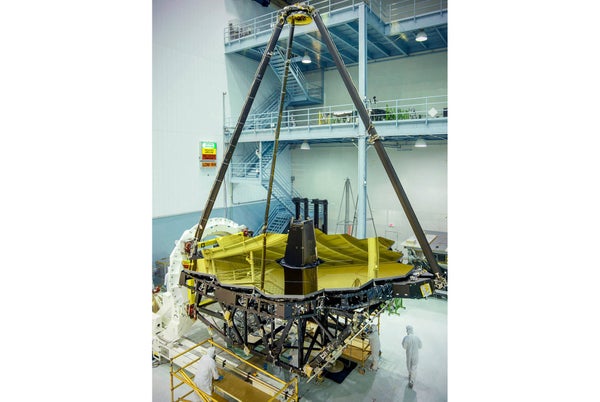This article was published in Scientific American’s former blog network and reflects the views of the author, not necessarily those of Scientific American
On supporting science journalism
If you're enjoying this article, consider supporting our award-winning journalism by subscribing. By purchasing a subscription you are helping to ensure the future of impactful stories about the discoveries and ideas shaping our world today.
Yesterday, for the first time since its complete assembly earlier this year, the 6.5-meter mirror of NASA’s James Webb Space Telescope was revealed in all its golden glory. For months, black covers have hidden each of the mirror’s 18 coffee-table-sized hexagonal segments, protecting them as engineers assembled and tested additional telescope components. Each of the segments is made of lightweight beryllium—a dull, gray, toxic metal. An atoms-thin layer of vaporized gold gives them their sunny appearance, and boosts the mirror’s reflectivity of infrared light. This will prove crucial for the telescope’s mission to observe the faint infrared glow of the universe’s first stars and galaxies when it launches in 2018.
Read more about James Webb in this recent in-depth feature.
